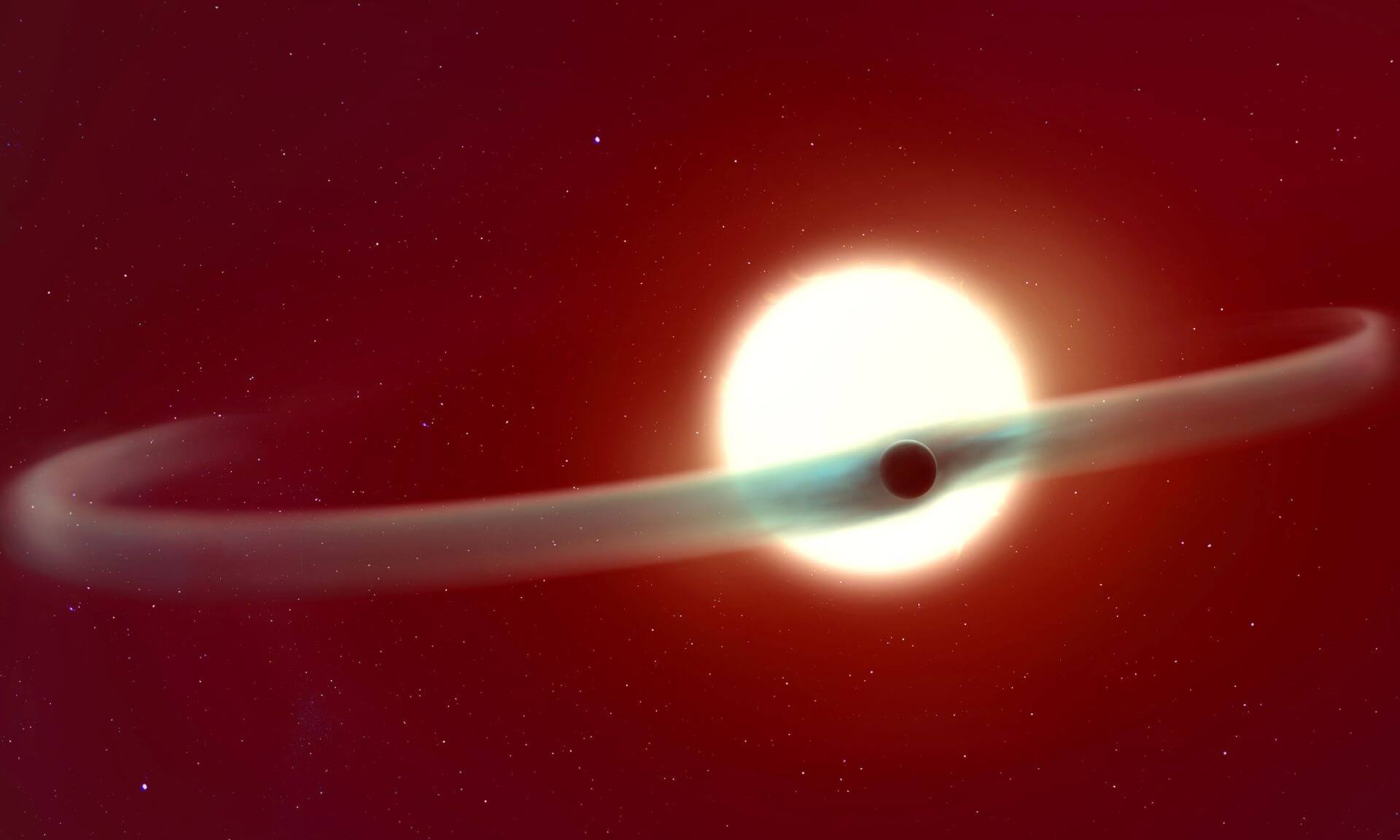LSPM J0207+3331 was discovered in 2019 by a citizen scientist participating in the Backyard Worlds: Planet 9 project. Astronomers quickly noticed that it was unusually cool for a white dwarf star, which is a sign of its advanced age since these stars gradually cool over time.
A team led by John Debes, co-author on the study and researcher at the Space Telescope Science Institute (STScI) in Baltimore, also detected an infrared excess around the star, indicating the likely presence of a debris disk. White dwarfs with disks often have a “polluted” atmosphere, with traces of planetary material that have fallen onto the star. The Université de Montréal team therefore analysed spectroscopic observations of LSPM J0207+3331 in search of these chemical signatures.
A Rocky Planet?
“White dwarfs offer one of the only ways we can directly measure the composition of exoplanets,” says Patrick Dufour, co-author of the study and Professor at the Université de Montréal. “When planetary debris come too close, they are torn apart by the star’s gravity and end up polluting its atmosphere, leaving a detailed chemical fingerprint of its composition.”
In the case of LSPM J0207+3331, the observations were even more spectacular than expected.
“It’s very difficult to detect planetary remnants in the atmosphere of cool, hydrogen-rich white dwarfs like this one,” notes Érika Le Bourdais. “Their atmospheres are more opaque, and heavy elements sink quickly toward the star’s centre. We expected to see only a few elements, but we found dozens!”
The analysis revealed the presence of thirteen different elements: sodium, magnesium, aluminium, silicon, calcium, titanium, chromium, manganese, iron, cobalt, nickel, copper, and strontium.
“Detecting such a diversity of elements is exceptional,” adds Le Bourdais. “And the amount of rocky material present is unusually high for such an old white dwarf.”
The chemical analysis paints a picture of the disrupted body: a layered object with a metallic core and a rocky mantle, much like Earth or the asteroid Vesta in our own Solar System. The elemental ratios also indicate that it was a rocky world with little ice: closer to an asteroid than to a comet.
Patrick Dufour adds, “Hydrogen-rich white dwarfs represent the vast majority of white dwarfs, and the coolest among them are among the oldest stars in our galaxy. We didn't have the habit of looking for signs of accretion in them. This unique case motivates us to expand our search to more of these stars.”
A Mysterious Perturbation
While the chemical makeup of the disrupted body is now better understood, the story of how it fell into the white dwarf remains hard to explain. How could an object have been deflected toward the star so late in the system’s history?
One hypothesis is that distant giant planets, interacting gravitationally over billions of years, may have slowly destabilised the system and sent this object on its fatal path. These planets, also very old and therefore faint, remain difficult to detect with our current instruments. Another possibility is that a close encounter with a passing star could have perturbed the orbits of the debris around the white dwarf.
“Future observations with the James Webb Space Telescope or archival data found in the European Space Agency’s Gaia mission could help distinguish between a planetary rearrangement and the gravitational effect of a close stellar encounter,” explains John Debes.
These scenarios illustrate the complexity and longevity of planetary systems, billions of years after their star’s death, and open new perspectives for research into planetary evolution.





